How to Jump a Windfoil
Royn Bartholdi
Level up your windfoiling by getting the whole kit out of the water. I guess we can call this the beginning of bump and jump windfoiling (so 1980s), or freestyle (the terminology of today); Either way, this is where you fly into a new space and join a new group of flyers who push the limits of their skills.
Before you get started, be sure to read the Safety and Notes sections near the bottom of the page.
Steps

Prepare
Look for the place on the water where you want to jump, like some chop, a ridge of water, or just an imaginary spot on the surface of the water. Having a launch point helps for the setup and timing of the jump. Make sure there is plenty of open space for the safety of others.
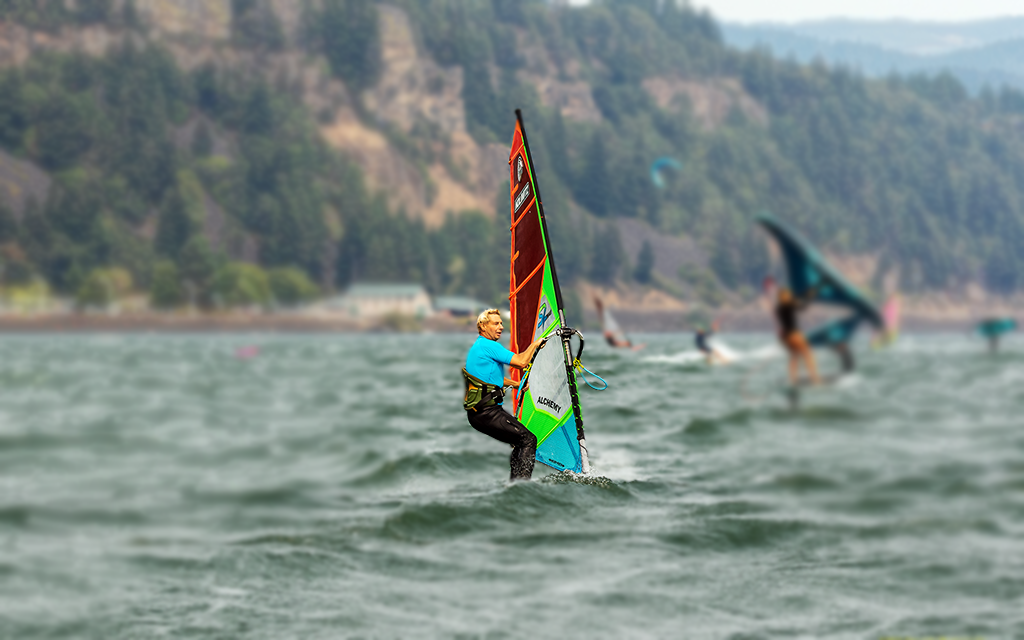
Get Ready
With your front foot in the footstrap, unhook from the harness line and insert your back foot in the footstrap, if you have one. (Before you leave the beach, make sure your footstraps are adjusted so your feet have a little wiggle room. You want them to be able to slip out in case you crash to reduce the risk of injury.) You can also perform this maneuver with your back foot out of the back footstrap and pressed against the deck. The trick will be keeping it on the board during the entire jump.
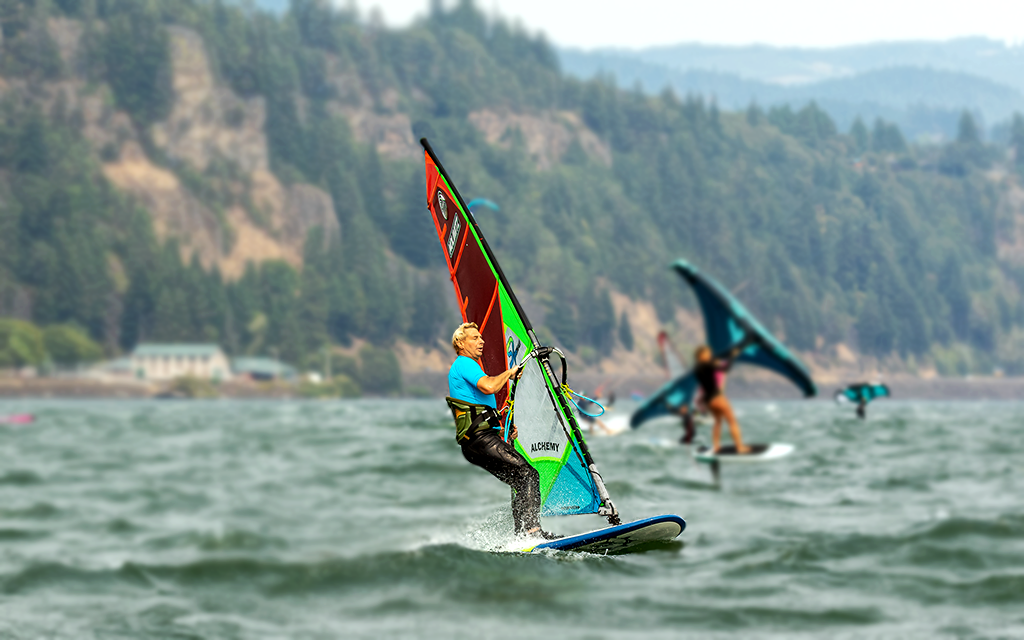
Launch
Use the foil for energy by dipping the board (pressing on the front foot) followed by pushing down with the back foot (increases foil angle) just as you hit your launch point. The more exaggerated the dipping motion the higher the jump. I also lift up with the booms a little which unweights the foil even more (more lift). Be careful to avoid touching the water during the dip because that generally is a jump stopper.
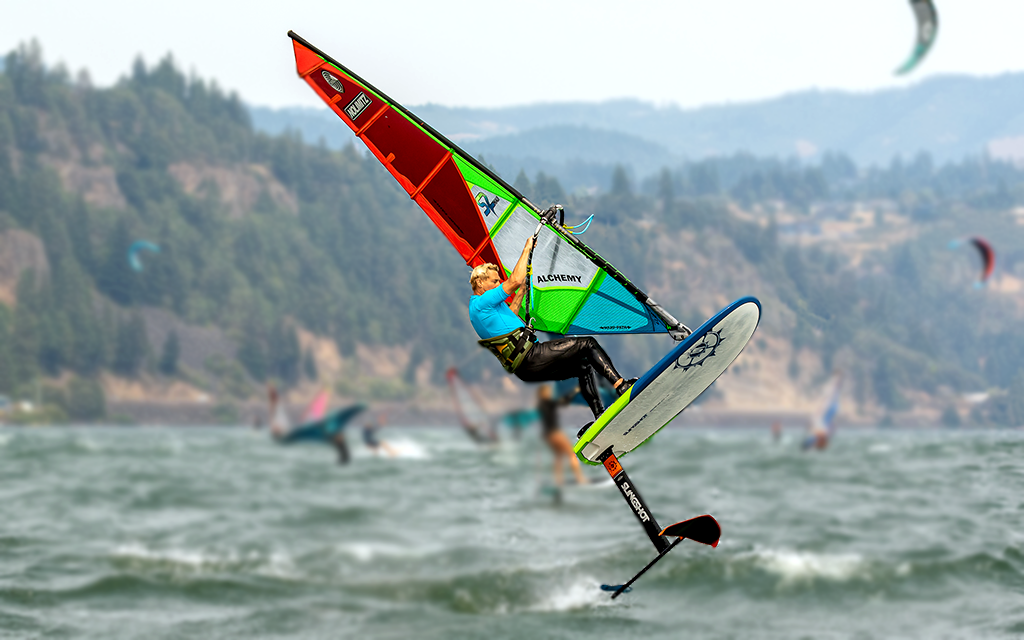
Airtime
The jump height is mostly determined by the foil and less by the sail, so try to keep the sail in control and stable during flight. Like windsurfing, pull up your legs and prepare for a landing. Also pay attention to the direction of your jump -- aim for slightly up-wind. This is the sweet spot; too far off wind increase the possibility of crashes and required more concentration on landing over the center line of the board. Keep your eyes forward, rather than looking down.
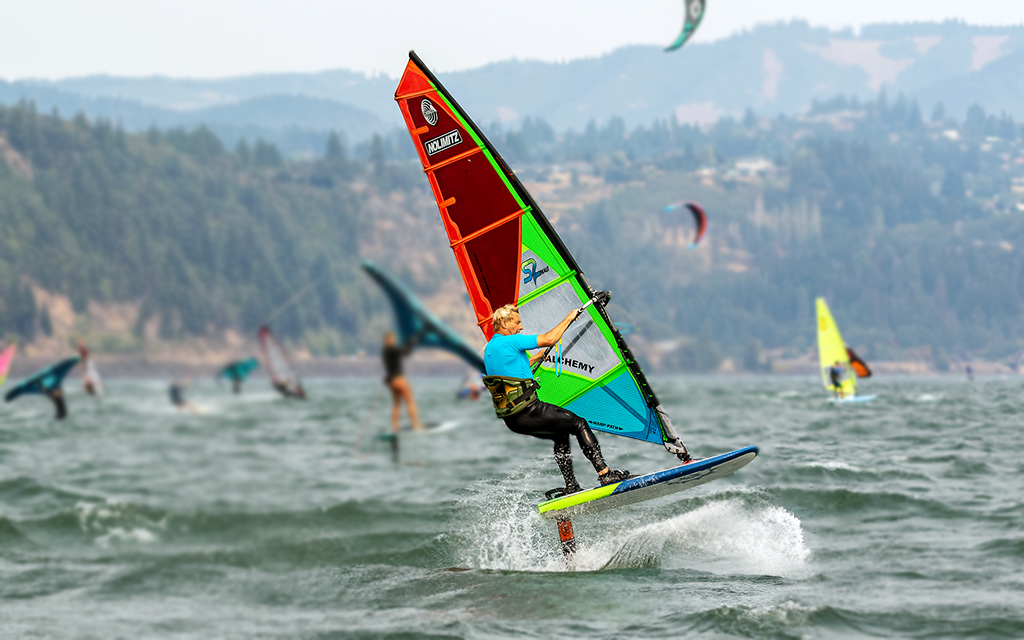
Touchdown
Land the board tail first with the wing square to the water and your weight centered over the board. In other words, the mast will be vertical but leaning back slightly. The idea is to have a predictable landing to maintain control over your rig. Warning! Crashing is a possibility here so be ready. Landing off the wind requires greater skill and is difficult because your weight tends to be off center. (I usually end in a crazy crash so avoid off wind jumps.)
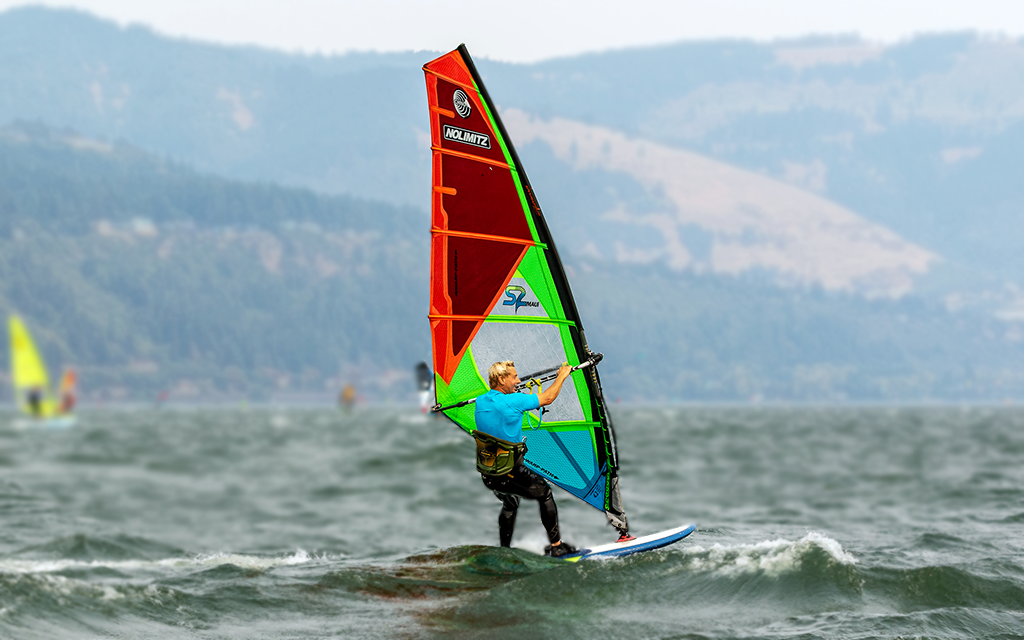
Sail Away
After touchdown you will want to get the board on foil again. In an ideal landing, the board kind of bounces off the water and starts foiling again with a little pumping action on your part. If you landed with the board facing too far into the wind, you will probably stall. This usually requires a board adjustment and starting from a dead stop.
Safety
- People Need Their Space - With respect to safety and others, make sure there is plenty of open space before your jump (no sailors, wingers, kiters, etc.) because other people will feel at risk being close to you while you are jumping. Heck, they will probably be shocked, afraid, or angry as the foil flies through the air and the vision of decapitation fills their mind. So visually scan all directions: upwind, downwind, behind, and forward. Remember, space is your friend. So keep distance, always!
- Tight Footstraps Can Cause Injury - I suggest you keep your footstraps a little loose so your foot can slip out easier during a crash. Feet caught in the footstrap are a little more at risk than fin windsurfing because the board (powered by the foil) has a tendency to rise as you are falling down, hence causing your feet to jam and then torque. In addition, the foil has more mass and will not slide away like a small 5 inch fin. This has happened to me a couple times with a few sprain ankles. Just saying!
- Wear Protective Gear For Safety - There is risk in this move for sure, and possible injuries. I recommend loading up with protective gear: wetsuit, booties, helmet, an impact vest, and anything else you feel might help, especially when you're learning the move.
Notes
- What? You Don't Have A Back Footstrap - The back footstrap usage varies a great deal in windfoiling with many sailors skipping the back footstrap altogether. This makes jumping a little trickier in that you will need to thoughtfully keep the back foot on the board through the entire maneuver (even in the air). But it can be done!
- That Back Footstrap is a pain in the arse... I mean foot - Footstraps keep the board to your feet. Duh!!! For flyers who mainly ride with backfoot out of the straps, try slowing way down and sheeting out a little so you have time to controllably find the back footstrap and insert your foot. (See Skill Development Below). You may even want to briefly touch down -- yet still planning -- for stabilization. Yep, you can lose control and crash just trying to find the back footstap because many people ride with the back foot as a balancer and kind of forward.
- You have a Side Mounted Back Footstrap - Side mounted straps (like a slalom racer) have a tendency to tilt the board mid air and land off-center, which increases the possibility of crashes on the landing. If you prefer this kind of footstrap, your technique will need a little more refining to land a good jump.
- Alluminum Masts Can Bend - I was sailing with aluminum foil masts in the beginning, and soon had bent two of them. So I guess carbon might be the goto choice for jumping.
- Taller Masts Jump Higher - I think taller foil masts jump higher because the board is higher off the water (bottom of board to top of water) when the wing leaves the water. I will say, you do seem pretty high even if the wing just comes out of the water a few inches. So much fun!
- Use Jumping To Clear Your Foil of Debris - Foils are larger than fins and are more prone to snagging debris in the water such as weeds, grass, etc. Sometimes a small jump, or a series of small jumps, can release the freeloaders from the foil. Unfortunately, this only works for very small pieces; most pieces cause too much drag, slow you way down, and effectively halt your ability to windfoil. Large snags will probably end your flight and cause a catapult. Ouch!
Skill Development
Here are some training drills you can try on the water to help you during your progression in learning How to Jump a Windfoil.
- Practice Porpoising the Board - Sail back and forth on both tacks and practice pumping the board so the board goes from low, about 6 inches above the water, to high, about 24 inches above the water. The goal is to become comfortable and skilled at pumping the board while not hitting the water on the low, and stalling or breaching on the high. This skill will help you with launching the windfoil jump.
- Practice Putting The Back Foot in the Footstrap - While sailing on a reach, practice placing the back foot in the back footstrap and taking it out again. Do this drill multiple times. Why? To learn a reliable and confident ability to move the back foot in and out of the strap. Many, if not most, windfoilers ride with their backfoot out of the back footstrap because they use the back foot in a more dynamic way than in legacy windsurfing; they move the foot around the deck (just in front of the footstrap) for balance and control of the foil. So placing the back foot in the back strap throws the sailor off. In fact, just finding the back footstrap seems awkward.
- Do Mini Jump Sessions - Practice consecutive mini jumps on flat water, a couple of times per tack, for a total of 10 jumps or more. Jump the board just enough to get the foil out of the water and land in a controlled manner. Why? Repetition is a great training strategy for attaining an intuitive understanding of the maneuver and developing consistency.

